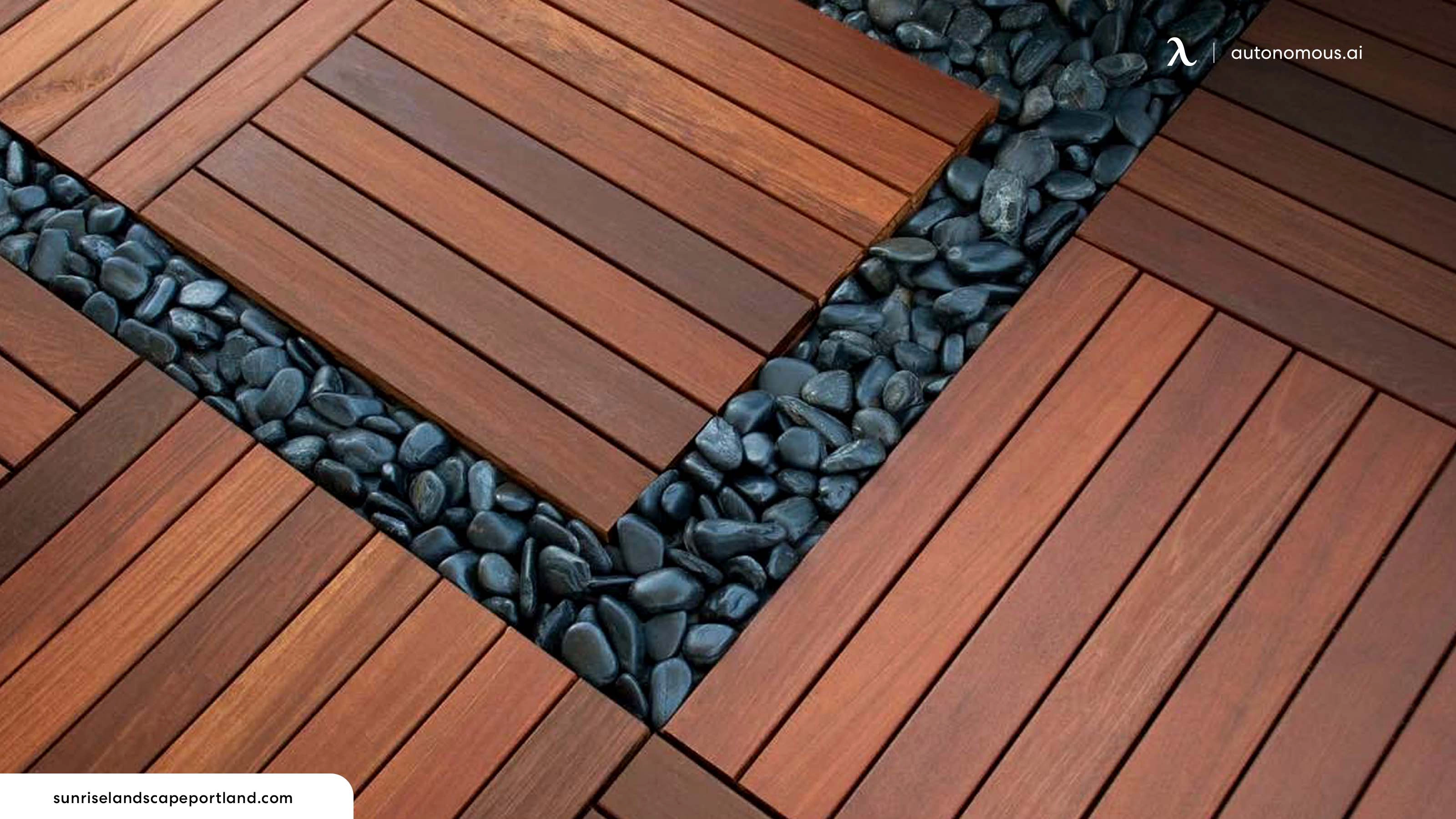
Top Popular Shed Floorings:
Your modern backyard ideas may require a specialized foundation, depending on its size and style. The blocks can be made of pressure-treated wood or concrete blocks and nailed down. As long as the foundation is level and close to the ground, the outdoor shed flooring frame should withstand the carpet's weight. Ideally, one should build this foundation on a bed of compacted gravel that is four inches deep. The flattening of the floor can also be done by hand tamping. As soon as you have the basic instructions in mind, you can choose the best flooring for an outdoor shed for your house.
Top Popular Shed Flooring Options
Following are some of the best and most used shed flooring materials:
1. Epoxy Flooring
Epoxy flooring is a remarkable option for transforming your shed into a polished, resilient space. This protective coating provides an impressive shield against wear and tear and resistance to water and chemicals.
With various color options available, you can effortlessly match the flooring to your shed's aesthetics, creating a visually appealing environment. Due to its complexity, the application process may require professional assistance, but the final result is a seamless and glossy finish that exudes sophistication.
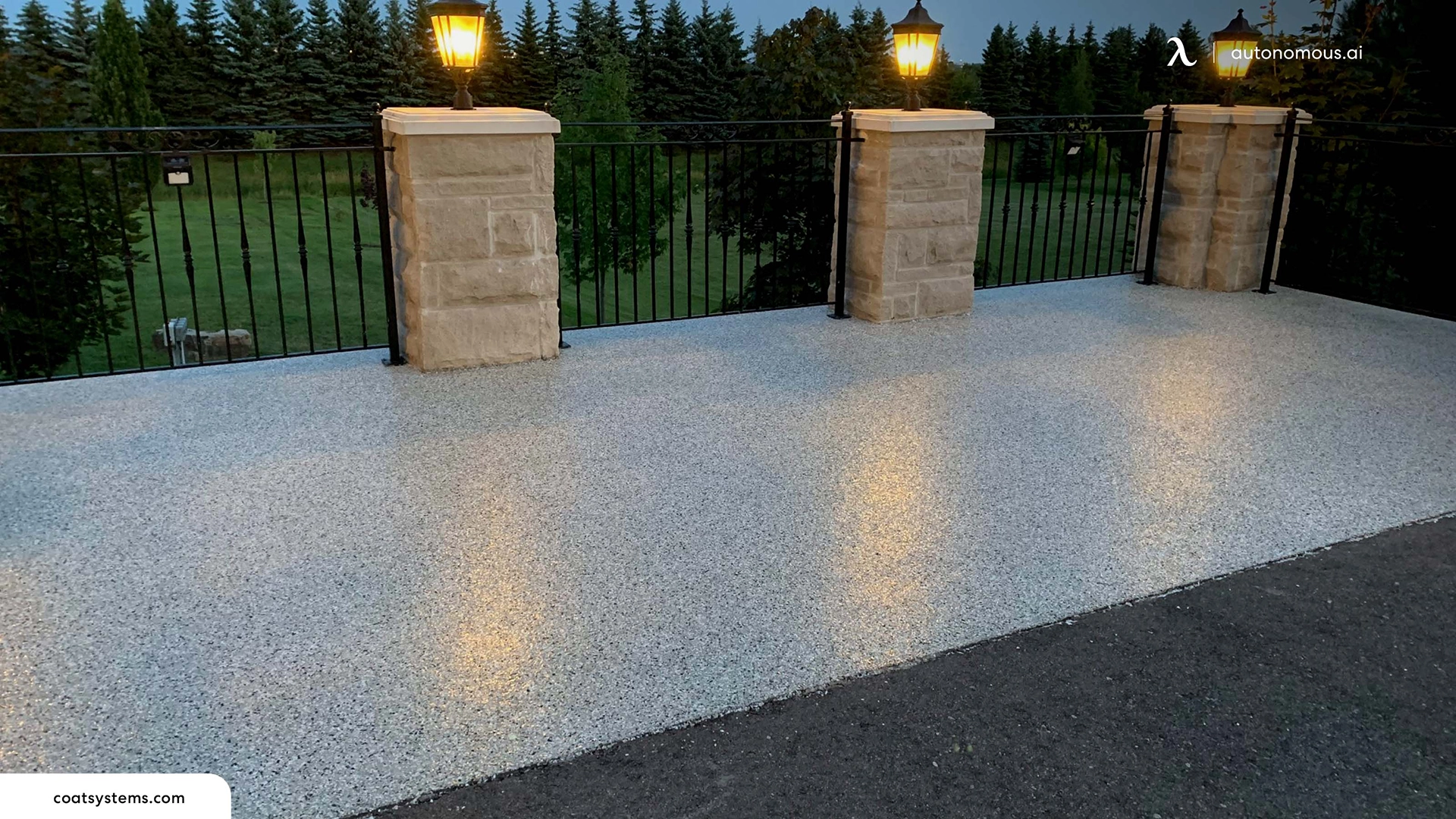
2. Concrete Flooring
Concrete flooring fits the bill perfectly if you seek a timeless and hard-wearing flooring choice. Known for its durability and longevity, concrete is an easy-to-maintain option that can withstand heavy usage. Sweeping and cleaning are a breeze, making it an ideal choice for sheds utilized as workshops or storage areas. However, it's worth noting that concrete installation can be more labor-intensive and expensive compared to some other options.
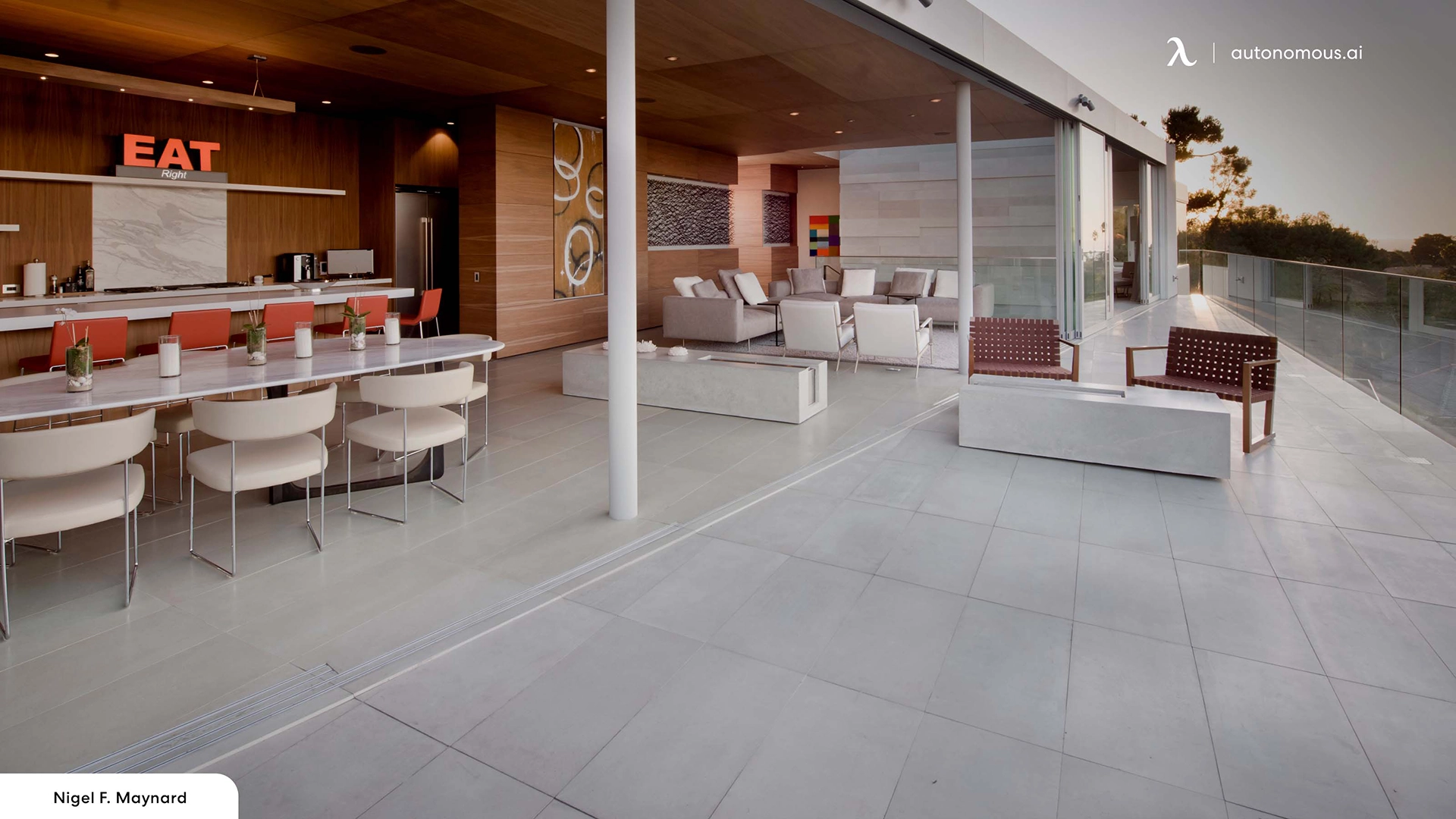
3. Rubber Flooring
Safety and comfort take the forefront with rubber flooring, making it an excellent selection for your shed. This slip-resistant material provides exceptional traction, reducing the risk of accidents. It's perfect for sheds that function as gyms, play areas, or workshops. Furthermore, rubber flooring offers a cushioning effect, which is beneficial for prolonged periods of standing. Its easy cleaning and maintenance add to its appeal.
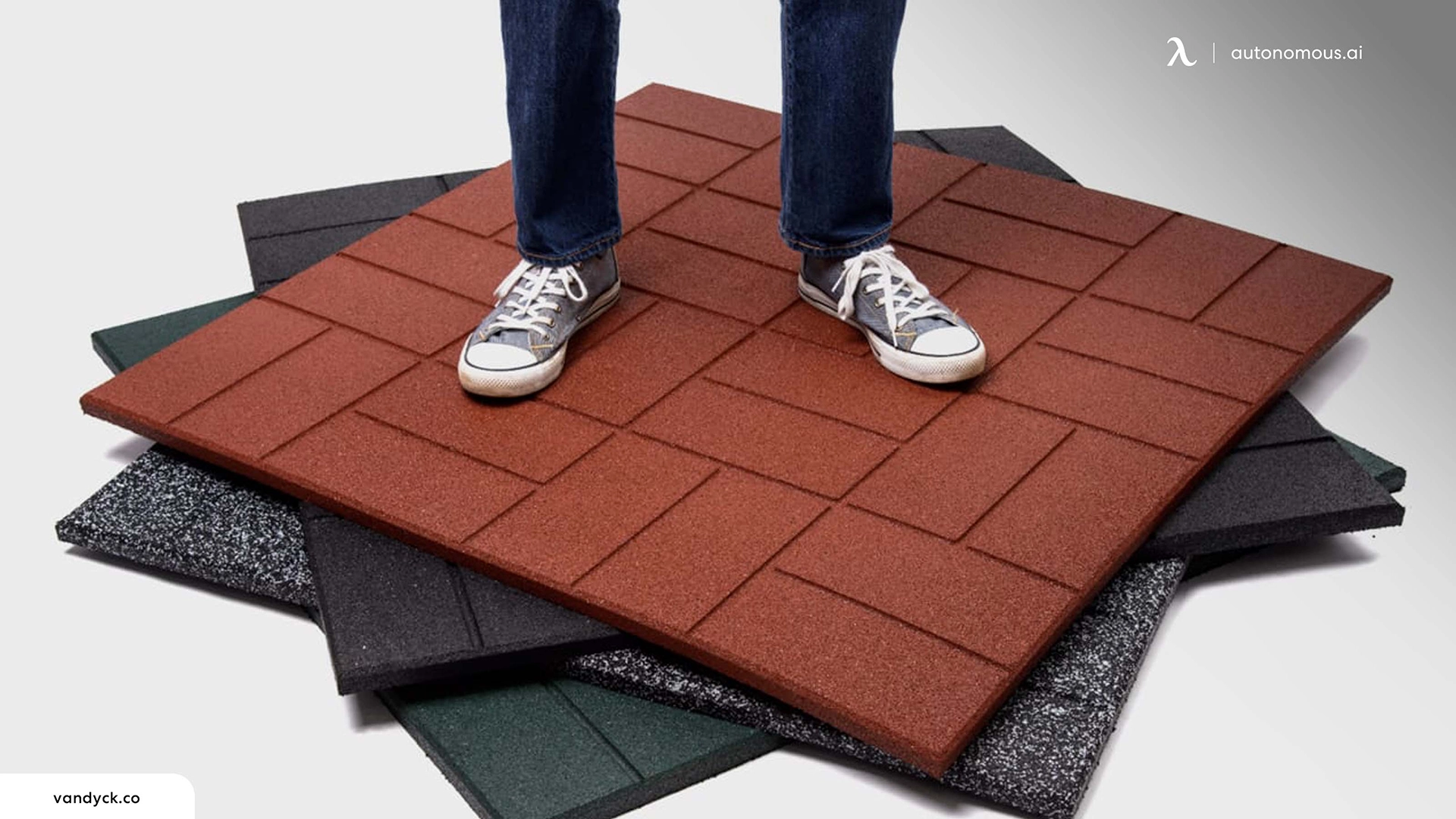
4. Interlocking Tiles
Interlocking tiles are a great alternative for an adaptable and user-friendly flooring solution. You may design your own flooring pattern thanks to their simple installation technique. With a variety of colors and patterns at your disposal, you can easily create a floor that matches the decor of your shed. Interlocking tiles are useful for many shed usage since they are strong and long-lasting. They are also convenient since they are simple to replace.
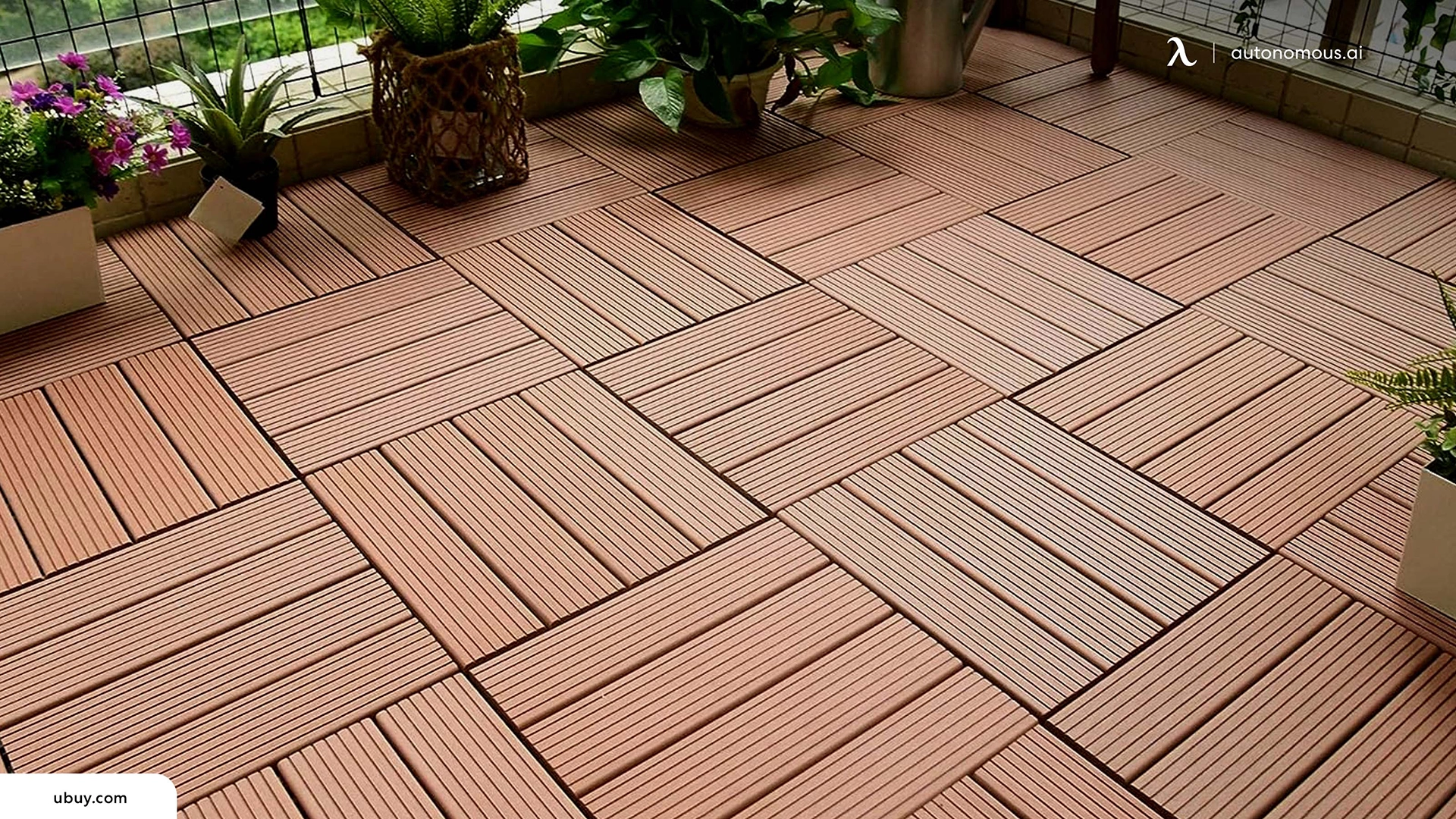
5. Laminate
In addition to serving as an extra storage room, laminate flooring is ideal for modern sheds that double as workspaces. The versatility and durability of laminate flooring make it an excellent choice for backyard office shed and flooring solutions.
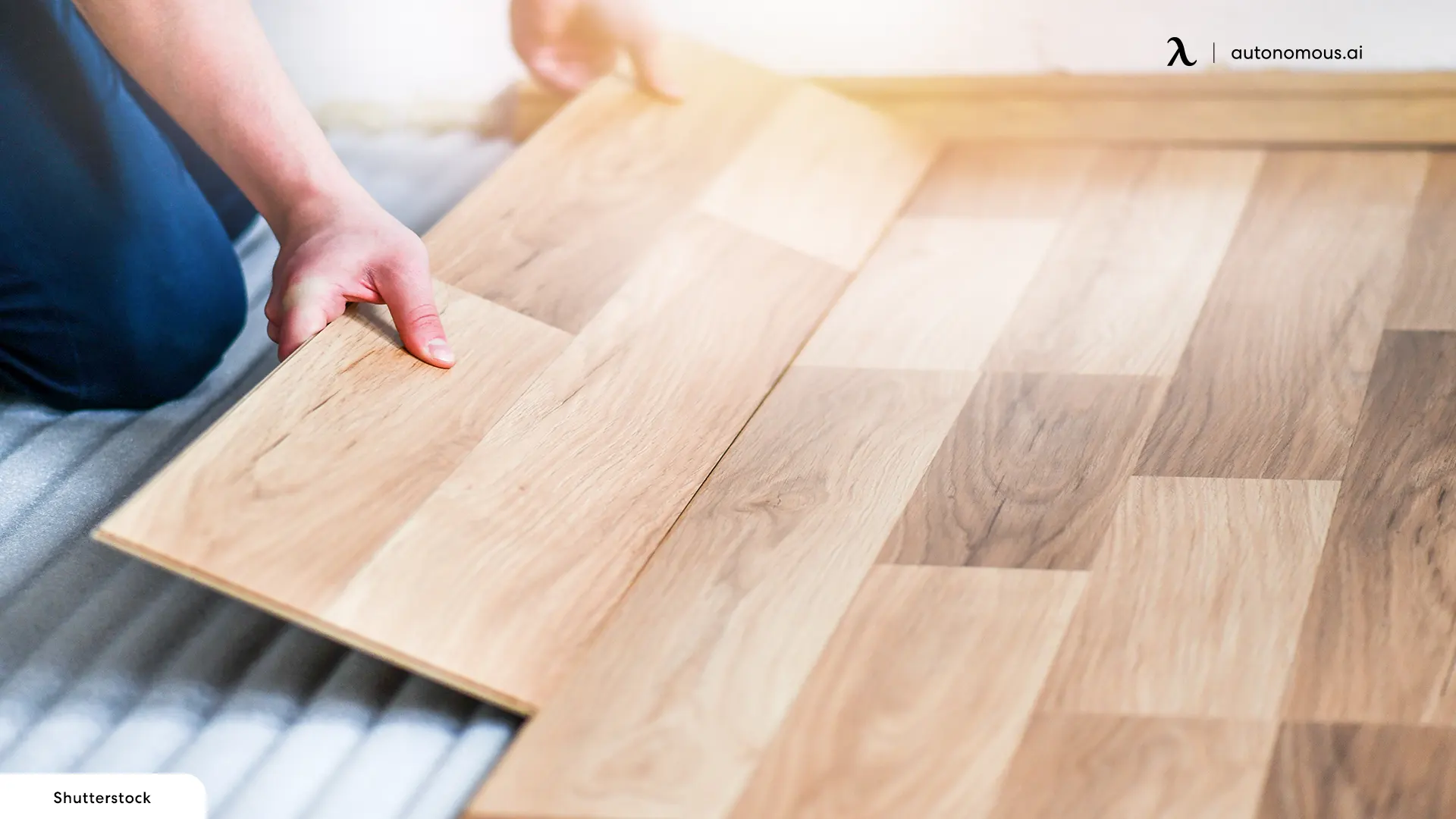
6. Plywood
A pressure-treated plywood shed garden shed flooring idea is one of the best options available. Wood rot, insects, and water are all resistant to pressure-treated plywood. As well as being easy to paint and sweep, it is also easy to maintain. Despite being pressure-treated, plywood can still suffer corrosion and weather over time.
7. Vinyl
Similar to laminate flooring, vinyl outdoor shed flooring options can crack or swell if exposed to extreme temperatures. Unlike laminate flooring, vinyl flooring is waterproof and can be used outside without fear of spills.
8. Plastic Tile
There is no better option than this one for being versatile and easy to use. It's no secret that plastic is extremely long-lasting, irrespective of whether it's your preferred option or not. Due to its nonporous nature and ease of cleaning, it makes excellent outdoor shed flooring ideas for outdoor areas. If you're concerned about the environment, recycled plastic or plant-based plastic tiles may interest you. They can also work as an insulator and keep you warm, if you were to install a heater in your privacy pod.
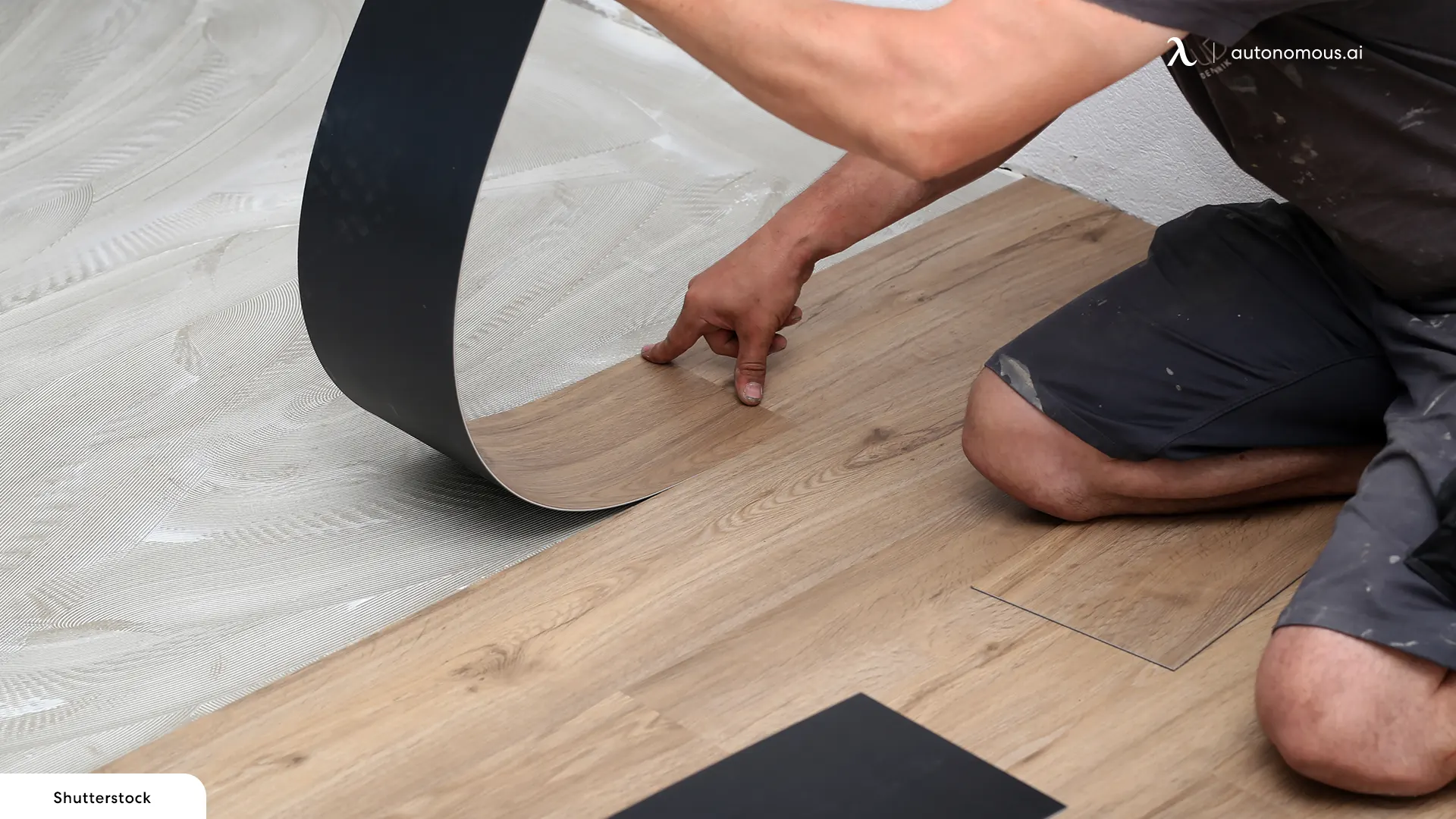
9. Oriented Strand Board
The most affordable option for flooring is the Oriented Strand Board (OSB); however, it lacks moisture resistance and has an unappealing appearance. When it comes to having an inviting backyard studio shed, OSB won't be a great choice.
10. Concrete
You will be able to store heavy items on concrete flooring because it is the most durable option. While it might be comfortable, it will also be expensive and hard on your feet if you stay on it all day.
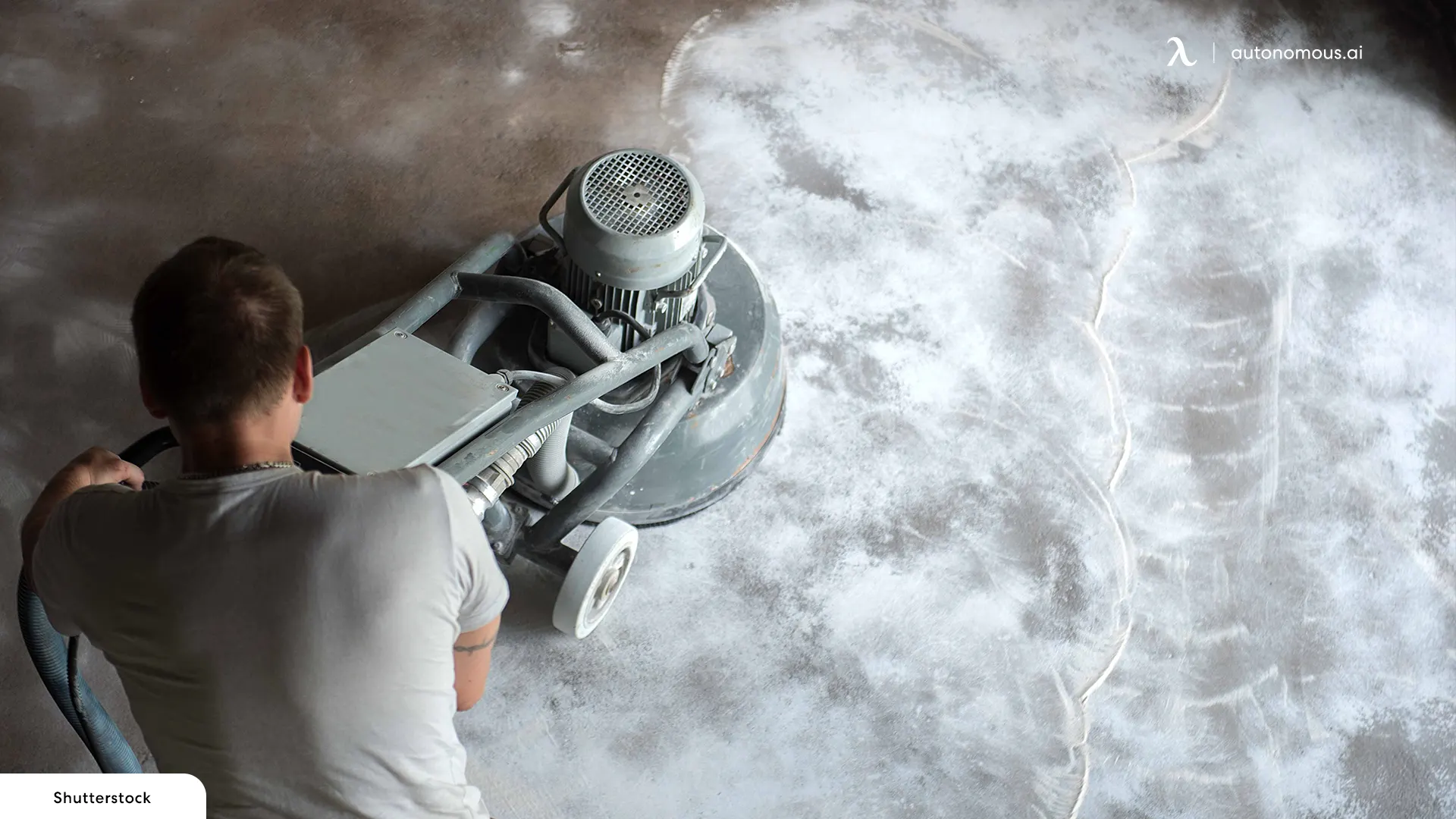
11. Cork Floor Covering
Cork flooring is a good choice for backyard office pod floors that you will stand on for long periods of time. In addition to its potential for gouging, it is not the best choice for heavy-duty storage or workshops due to its susceptibility to gouging.
12. Rubber Mats
It's easy and quick to install rubber mats; plus, they're affordable. In addition to protecting your flooring from scratches, stains, and scuffs, it also ensures a smooth surface. You can easily secure the mats to the floor with nails or a staple gun.
13. Paint
You can apply floor paint to your shed's floor if it isn't durable. If it does, you can make it more durable. The purpose of floor paint is to protect your floor. In addition to helping maintain the floor and improving its appearance, plywood flooring can also aid in maintenance.
14. Carpet
Using any extra carpet you have lying around can be a great idea when carpeting your shed floor. Adding carpet can create a soft surface and warmth in your shed. The downside of carpet is that it is not very durable. In dirty carpets, mold can grow because it absorbs water, stains easily, and absorbs odors.
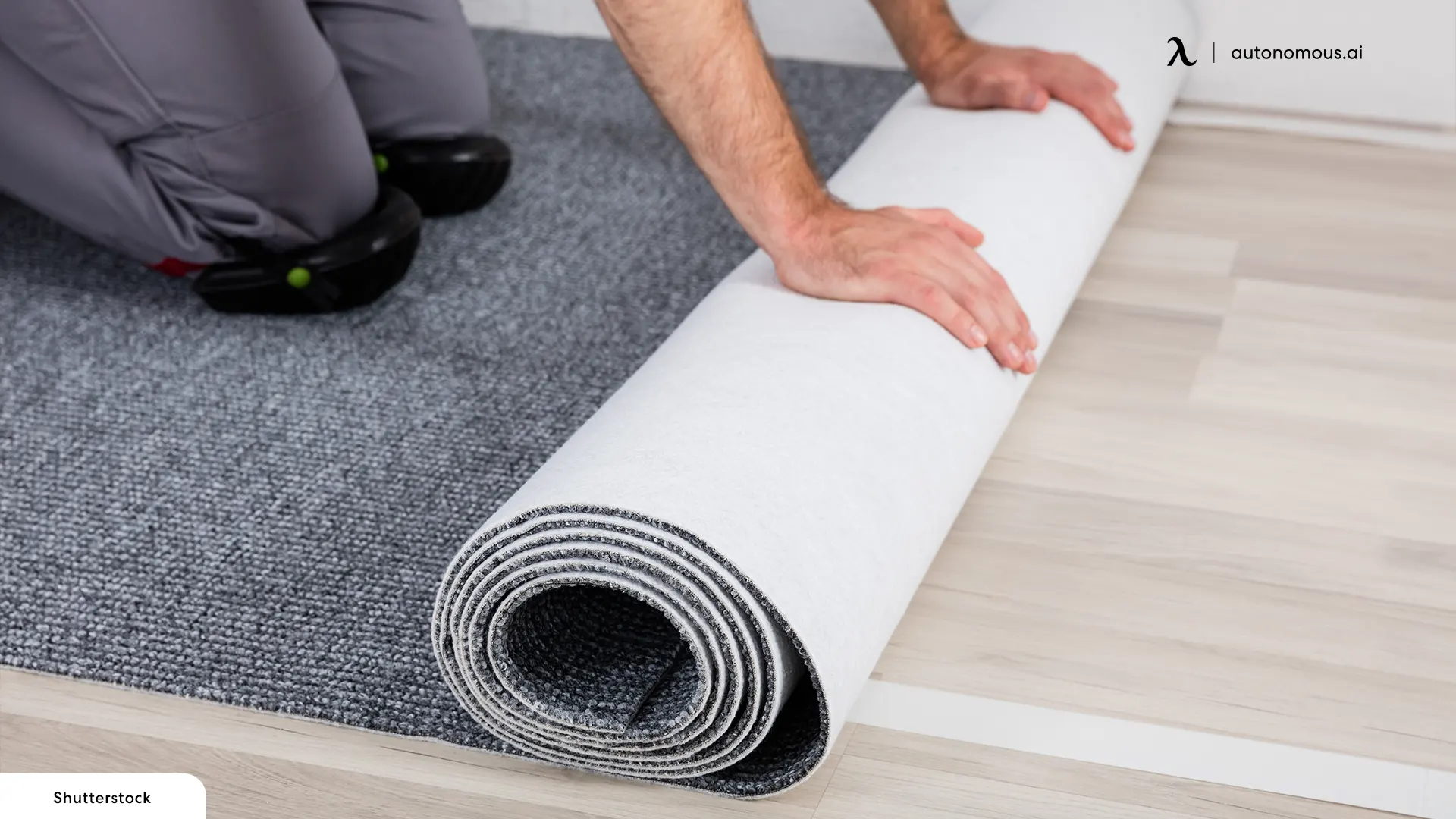
15. Linoleum
In a modern garden shed, you can put linoleum or linoleum flooring. Shed flooring made from this material is durable and budget-friendly. It is possible, however, that lino could trap moisture under it, resulting in rot and mold.
Are you looking to improve your outdoor shed's functionality and aesthetics? The right flooring can make all the difference, turning a basic shed into a versatile and attractive space. Let's explore the importance of shed flooring, guide you through various material options, and provide expert insights to help you make the best decision for your needs.
FAQs
Why is a Shed Floor Essential?
Picture this: your shed, a haven for your valuable items, exposed to the unpredictable elements and sitting directly on the ground. Moisture seeps in without a proper shed floor, leading to decay and damage. But fear not! By installing a sturdy shed floor, you create a protective barrier, ensuring the longevity of your belongings. Plus, with its ability to support heavy loads, your shed becomes a fortress for your equipment, tools, and more.
What Factors Should You Consider When Choosing Shed Flooring Material?
Stay calm; we're here to guide you through the maze of choices(when it comes to outdoor sheds with floor). When it comes to selecting the crème de la crème of shed flooring materials, several crucial factors should influence your decision. Let's embark on the exploration of some tips for shed floor ideas:
1. Durability
Dwell in the unyielding! Seek out materials that laugh in the face of weather extremes, resist the relentless march of rot, and boast unwavering resilience for years to come. Your shed floor should be a testament to longevity, standing tall amidst the test of time.
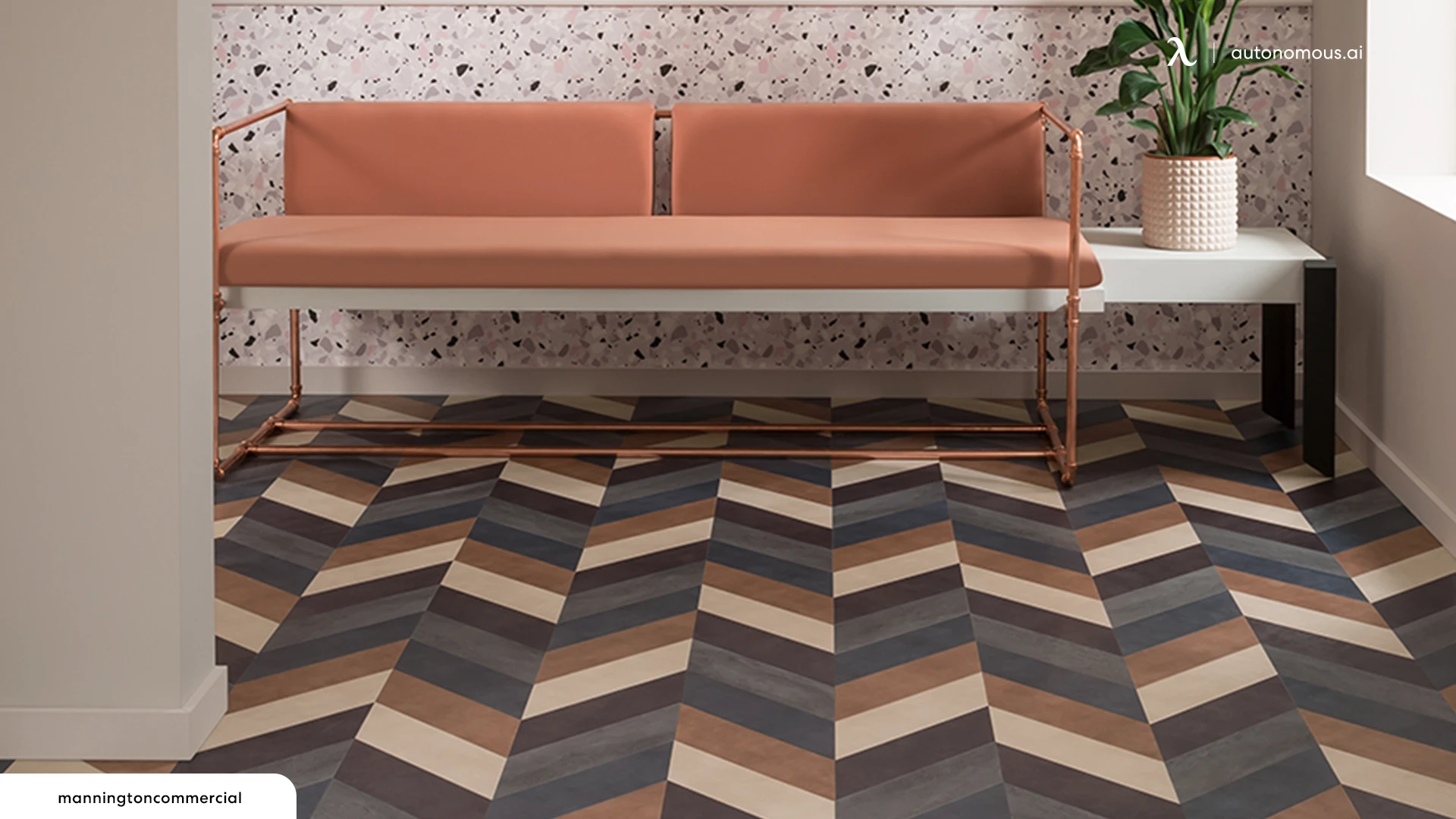
2. Ease of Installation
Dare to DIY! Consider your inner handyman (or handywoman) when choosing your flooring. Opt for a material that aligns with your DIY prowess, empowering you to unleash your creative spirit easily. A DIY-friendly flooring option ensures that your vision becomes a reality without frustrations.
3. Price
Where value meets investment! Walk the tightrope between budget and quality; the perfect shed flooring should be a harmonious fusion of both. Treat your shed to an upgrade that doesn't break the bank but delivers exceptional value and lasting satisfaction.
4. Style and Color Options
Let aesthetics ignite your soul! Embrace the opportunity to infuse your shed with character and charm. Your shed's flooring is a blank canvas, waiting for the masterpiece of your personal taste and style preferences to unfold. Match colors and textures to create an atmosphere that resonates with your heart.
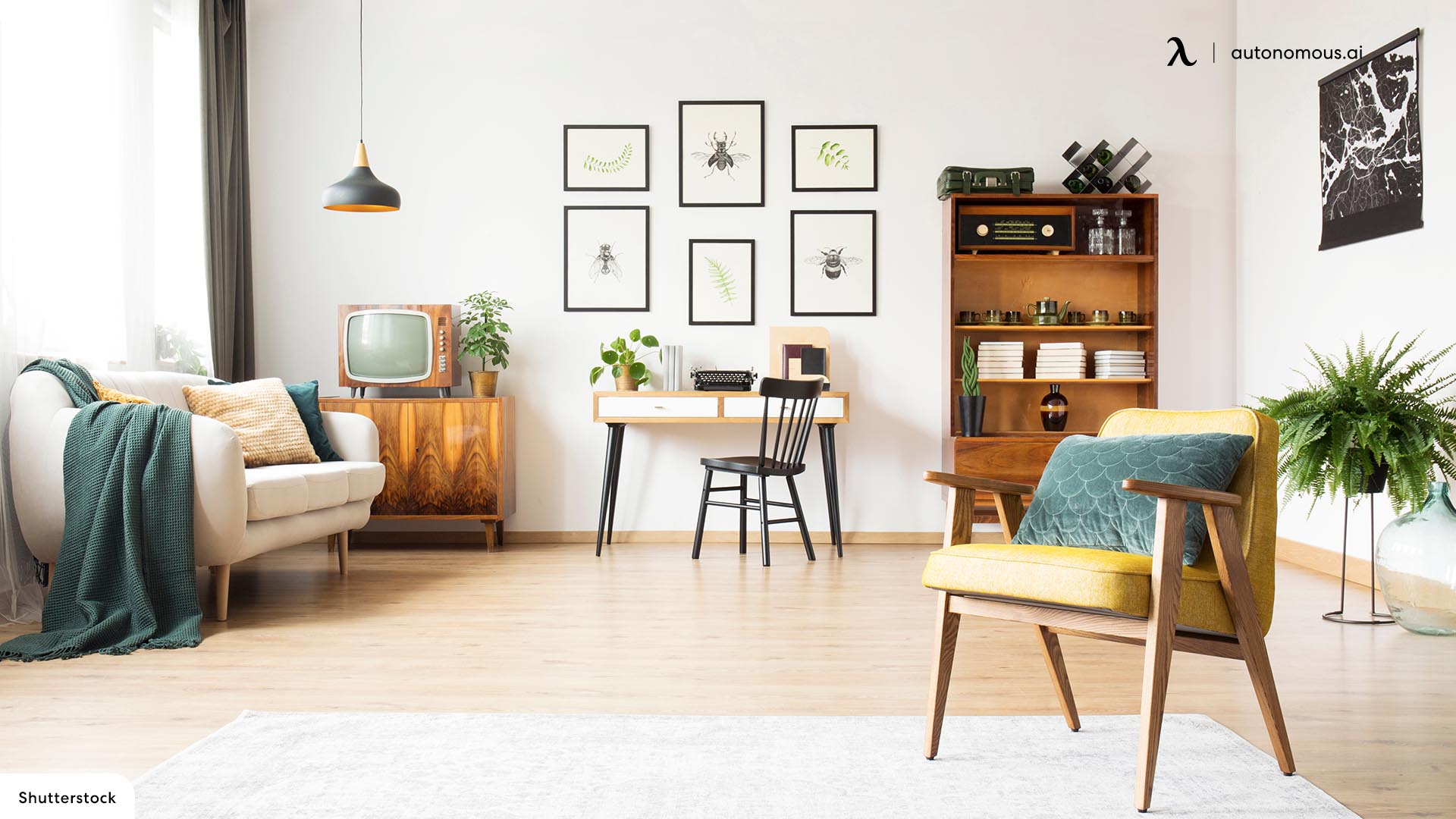
5. Maintenance
Effortless beauty! Balance the allure of beauty with the practicality of maintenance. Select a flooring material that gracefully withstands the tests of time while keeping maintenance demands to a delightful minimum. Experience the full potential of your shed without being tethered to tedious upkeep.
If you build it well, a garden shed may serve as an extra room in your home. Its multipurpose design allows it to serve as a study, playroom, or even spare bedroom. There are a few things to consider if you want to turn your shed into an annex to your home.
Is Your Garden Shed an Extended Living Space?
You can unlock the untapped potential of your garden shed and transform it into a captivating extended living space. With careful planning and creativity, you can reimagine this humble structure into a cozy retreat you'll adore spending time in.
Consider the following shed flooring options to create an extended living space:
- Insulate and ventilate the shed: Ensure year-round comfort by insulating and ventilating your shed. This thoughtful step will help maintain an ideal temperature inside, regardless of the season. Depending on your climate, adding a heater or air conditioner may also be necessary for ultimate coziness.
- Choose flooring that balances comfort and durability: Select flooring that effortlessly marries comfort and durability. For a home office setup, opt for whisper-quiet flooring that is easy to clean, allowing you to focus on your undisturbed tasks.
- Furnish and decorate with flair: Turn your shed into a haven by thoughtfully furnishing and decorating the space. Curate a comfortable seating area with a plush sofa, supportive chairs, and a functional desk. Enhance the ambiance with a cozy rug underfoot, soft lighting, and tranquil colors.
With a little planning and effort, your garden shed will blossom into an inviting extended living space that brings you joy and relaxation.
How Much Weight Can a Shed Floor Hold On Average?
The weight capacity of shed flooring can vary depending on the material used and the shed's construction. On average, a well-built shed floor can typically support several hundred to a thousand pounds, making it suitable for storing heavy equipment or machinery.
Tips for Maintaining the Shed Floor
Make Sure It's Dry
Keeping floors dry will benefit them all. You might also see some oil and fuel spills in your shed if you store wet mowers or lawn debris there. Preventing long exposure to these liquids is the most important thing. You might want to keep some sawdust or cat litter handy to clean up fuel spills and a broom to sweep away puddles.
You may want to consider installing a skirt of wire mesh or corrugated panels to separate the walls from the ground. You can prevent debris from getting into your walls by protecting the gap between the ground and the walls. Whatever material you choose, make sure it allows air to flow through it. Maintaining the grade of the ground next to your shed is also important to prevent puddles from forming.
Is Pressure Treatment Required for Shed Floors?
Pressure-treating a wooden shed floor is necessary. In order for your shed's floor to stand up to the elements without rotting or molding, you must pressure-treat it.
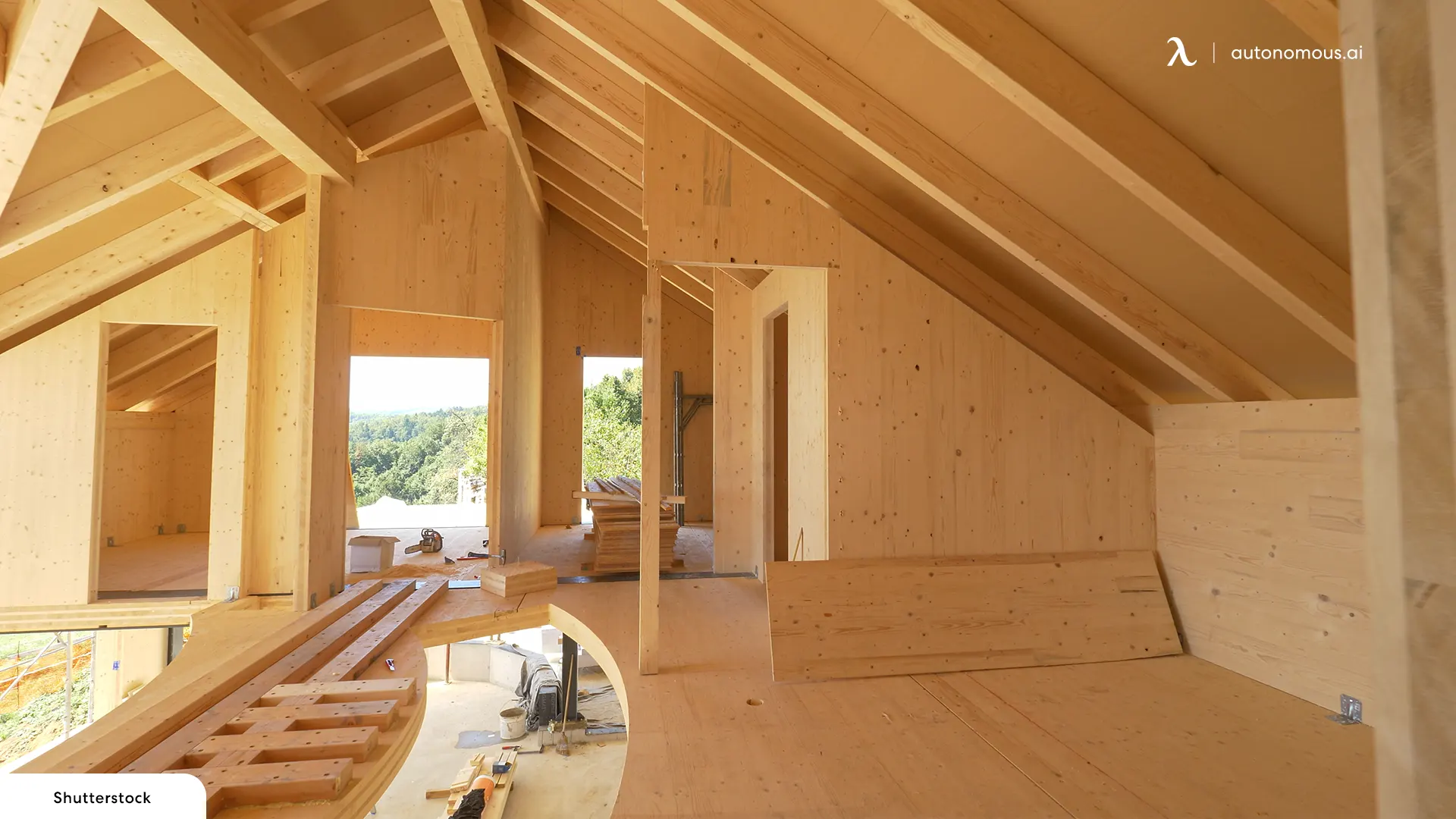
Joists
When designing and building your shed floor, it is important to choose the right joists. It is essential to choose floor joists that can safely hold the items you wish to store, and the heavier the items are, the more critical it is to choose the right ones.
For a shed floor, joist hangers are generally not required. It will be necessary if you do not have anything under the joists to keep them stable, but putting a runner underneath should do the trick. It is possible to add grooves to the runners so that the joists can rest in them for added stability.
Thickness
It should be possible to lay a concrete slab 4" thick for a shed floor. It is not common to need a slab wider than 6-8" if you are planning to store something heavier in your shed. Some shed owners also choose to add two to four inches of thickened edge to their shed floor to prevent cracks and breakages. Standard plywood thicknesses are 5/8-inch to 3-4-inch, while standard OSB thicknesses are 5/8-inch.
Why Choose the WorkPod
The WorkPod stands out from other brands by being optimized to include everything you need for setup, such as a foundation and easy assembly, which takes only 2-3 days. Additionally, the cost of the WorkPod includes essential elements like windows, a door, and lifestyle interior features. The table below provides a detailed cost comparison between the WorkPod and other brands, highlighting the value and convenience of choosing WorkPod.
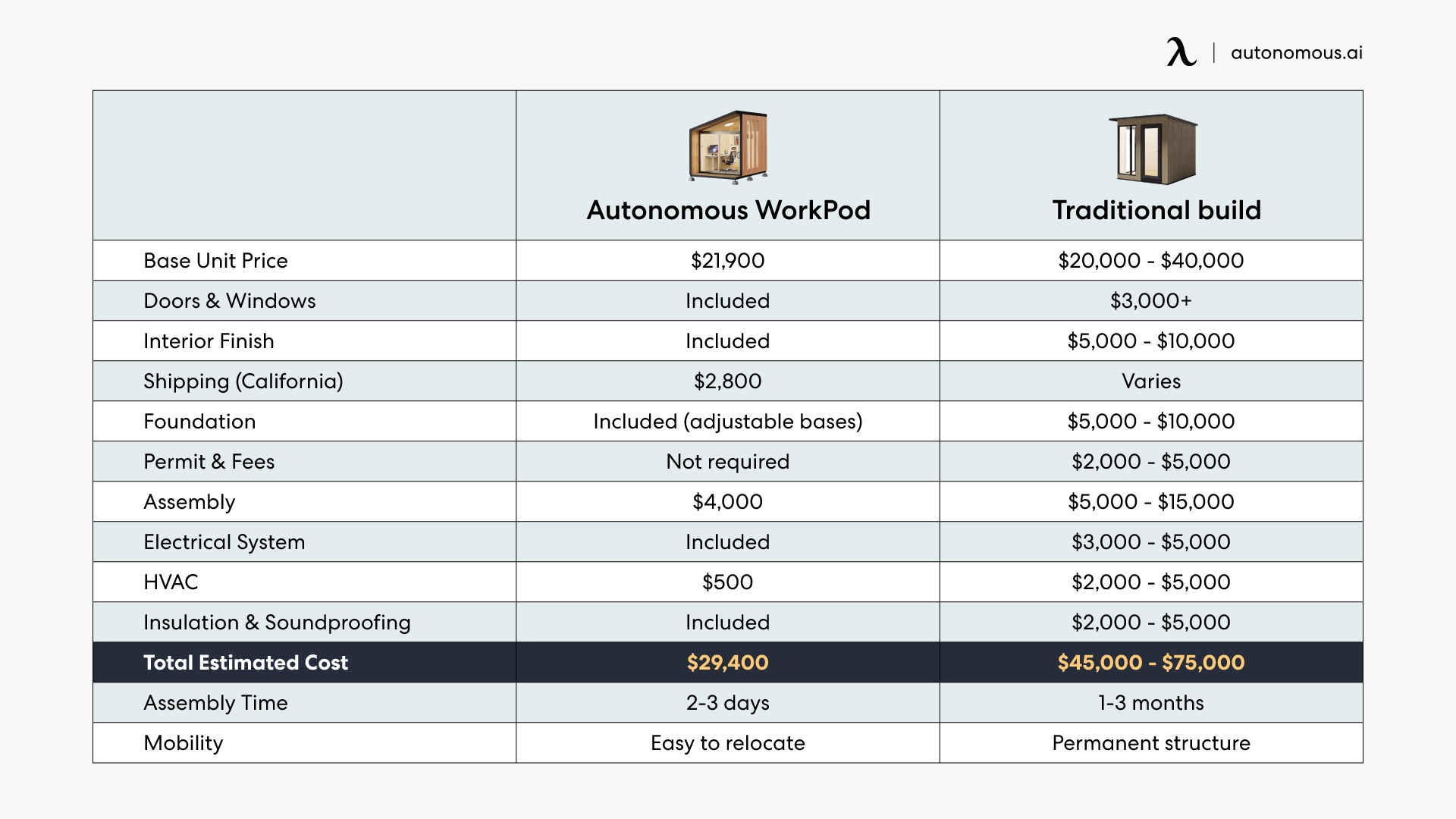
Stay connected with us!
Subscribe to our weekly updates to stay in the loop about our latest innovations and community news!
Interested in a Link Placement?
.svg)
.svg)


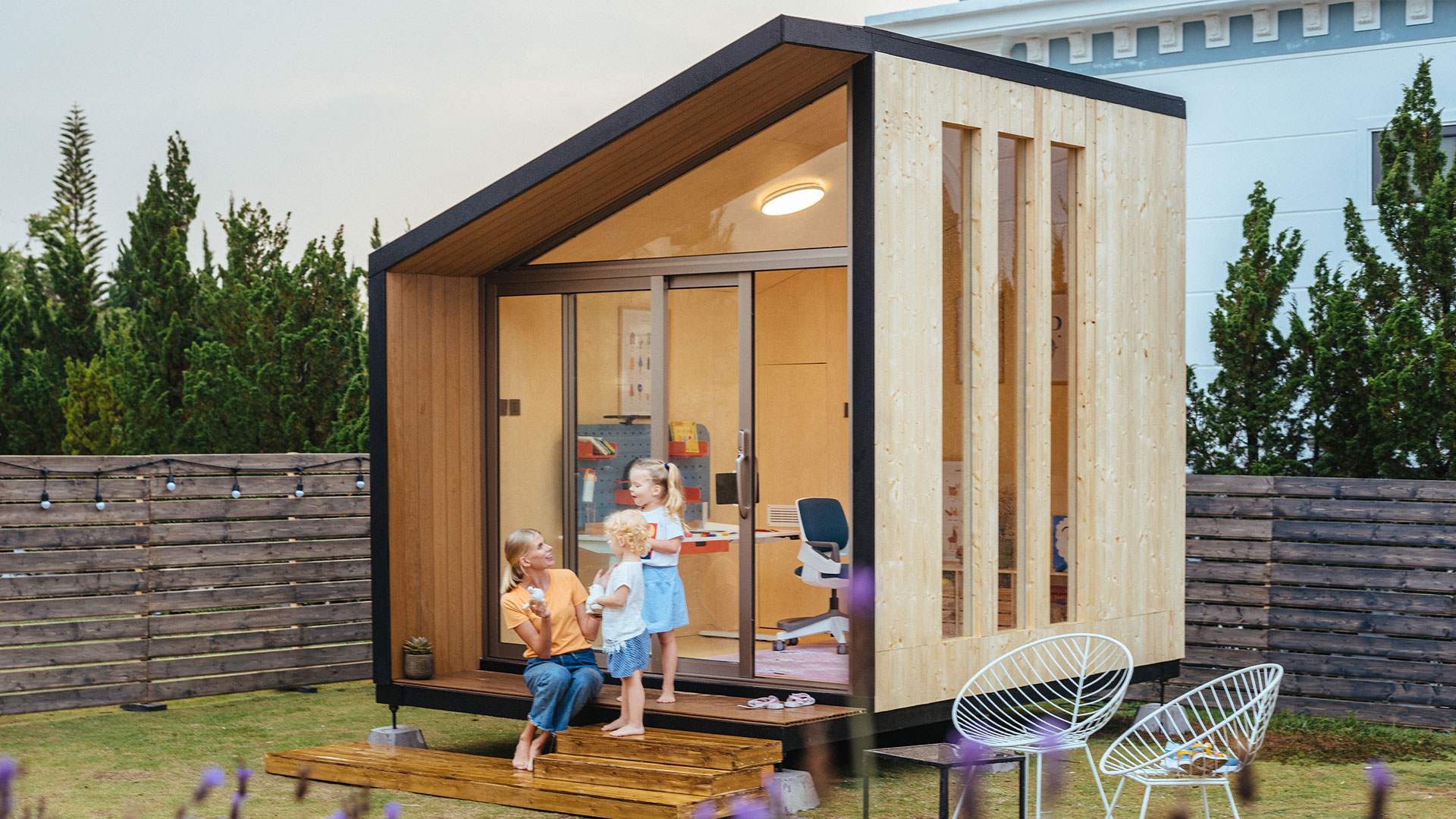



/https://storage.googleapis.com/s3-autonomous-upgrade-3/production/ecm/230914/bulk-order-sep-2023-720x1200-CTA-min.jpg)

/https://storage.googleapis.com/s3-autonomous-upgrade-3/static/upload/images/new_post_author/admin-1.png)